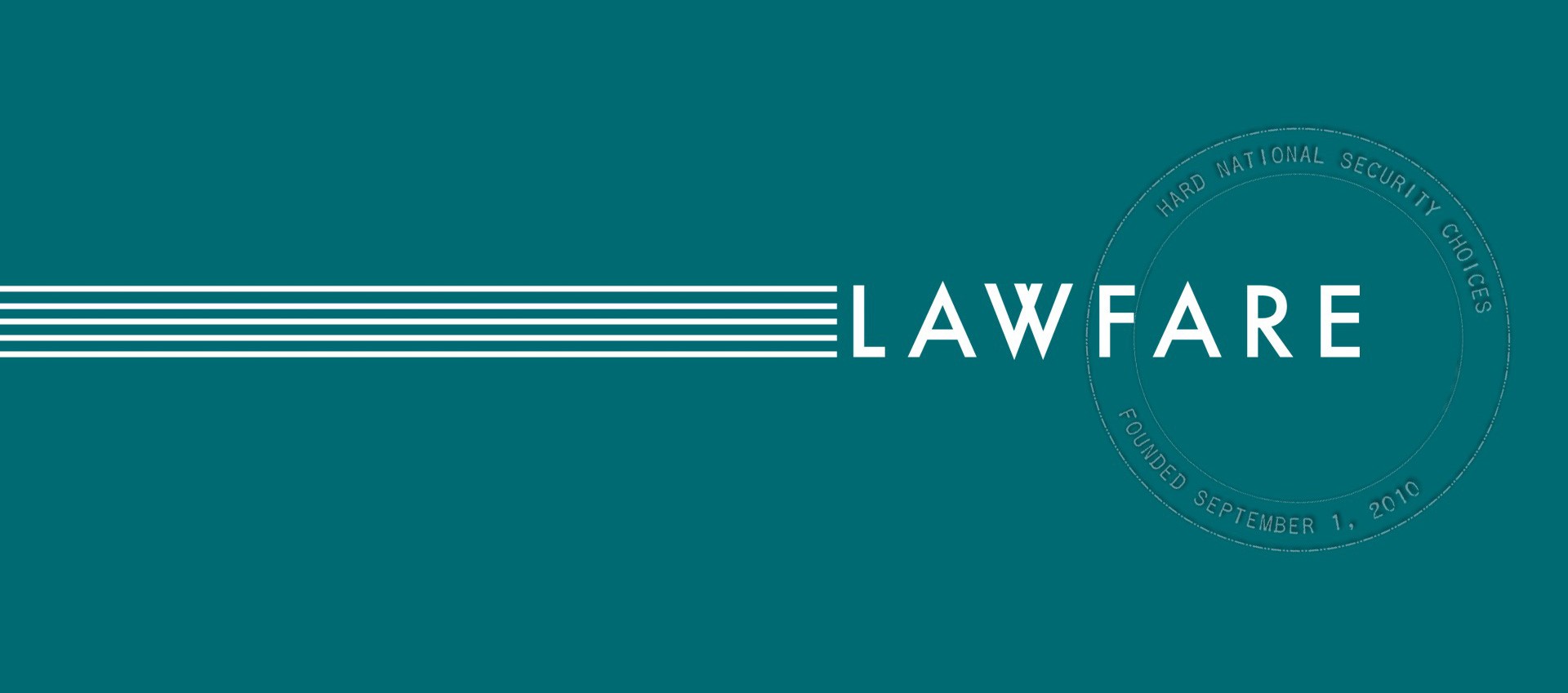How the Supreme Court Should Decide Jam v. International Finance Corp.
The Supreme Court will soon hear oral arguments in Jam v. International Finance Corp. The case, which will be argued on October 31, 2018, raises an important threshold question about the immunity of international organizations from suit in the United States. But the briefing does not provide the full answer.
Published by The Lawfare Institute
in Cooperation With

The Supreme Court will soon hear oral arguments in Jam v. International Finance Corp. The case, which will be argued on October 31, 2018, raises an important threshold question about the immunity of international organizations from suit in the United States. But the briefing does not provide the full answer.
A federal statute from 1945—the International Organizations Immunities Act (IOIA)—provides in 22 U.S.C. § 288a(b) that international organizations designated as such by the president have “the same immunity” from suit enjoyed by foreign governments. In June 2017, the U.S. Court of Appeals for the District of Columbia held in Jam that the IOIA freezes the immunity of international organizations to that which foreign states were entitled in 1945. The immunity of foreign governments has changed a great deal since then, however, particularly through the enactment of the Foreign Sovereign Immunities Act (FSIA) in 1976. The plaintiffs/petitioners in Jam argue that the immunity of international organizations is not stuck in 1945 but instead changes along with the immunity of foreign governments, which has generally decreased over time. The petitioners have the better of the arguments for the reasons explained their briefing and in the amicus briefs filed by the United States and by the Professors of International Organizations and International Law (which I joined).
The Court should, however, tread very cautiously in terms of what it says about the equivalence of international organizations and foreign states for immunity purposes. The plaintiffs raised two questions in their petition for a writ of certiorari:
1. Whether the International Organizations Immunities Act—which affords international organizations the “same immunity” from suit that foreign governments have, 22 U.S.C. § 288a(b)—confers the same immunity on such organizations as foreign governments have under the Foreign Sovereign Immunities Act, 28 U.S.C. §§ 1602-11.
2. If not, what are the rules governing the immunity to which international organizations are entitled?
The Supreme Court granted the petition, limited to question one. For the court to rule for the plaintiffs and for an immunity standard that evolves over time would presumably mean answering “yes” to question one: The immunity of international organizations is “the same immunity” as foreign governments have under the FSIA today, not the immunity to which governments were entitled in 1945.
But an unequivocal “yes” to question one would be unfortunate. It is not necessary to resolve the Jam case itself, and may generate unanticipated consequences in future cases.
The FSIA and the IOIA should not be read to mean that the FSIA governs all questions of the immunity of international organizations, even if the FSIA can be applied without difficulty in many cases involving international organizations. In the Jam case itself, the question is whether the commercial activity exception to foreign sovereign immunity, 28 U.S.C. 1605(a)(2), also applies to international organizations. It should, assuming that doing so does not violate international law. The commercial activity exception is a core development in the law of foreign state immunity that can be applied to international organizations, and the FSIA requires a nexus between the commercial activity and the United States, limiting the exposure of international organizations and other defendants under this exception. (On this last point, see OBB Personenverkehr v. Sachs.)
The FSIA should not be interpreted as resolving all matters of the immunity of international organizations, however. Four examples illustrate the point.
First, the FSIA was recently amended by the Justice Against State Sponsors of Terrorism Act (JASTA), which created the new 28 U.S.C. § 1605B, providing that a “foreign state shall not be immune from the jurisdiction of the courts of the United States” in cases alleging damages caused by an act of international terrorism in the United States and a tortious act of a foreign state—or its officials or agents—regardless of where the tortious acts of the foreign state occurred. If the foreign state is not immune, 1605B also creates a cause of action for nationals of the United States against the foreign state. Although couched in terms of immunity, the creation of a new cause of action against foreign states by JASTA should not apply to international organizations. Even in a case based upon a different cause of action, the 1605B exception to immunity should not apply to international organizations because there is no evidence Congress so intended when it enacted JASTA, because the provision is novel, and because in some situations the exception goes beyond what international law currently permits.
Second, if applying the FSIA would result in a denial of immunity to an international organization that would violate customary international law or an international agreement to which the United States is a party—whether a self-executing treaty, a non self-executing treaty or an executive agreement—courts should not do so. The Charming Betsy canon of interpretation (see Murray v. Schooner Charming Betsy) means that the IOIA should not be interpreted to put the United States in violation of international law, unless Congress makes its intent to do so clear.
Third, consider a criminal case brought against an international organization. Whether the FSIA applies in criminal cases has not been resolved. Notably, the U.S. government’s amicus brief in Jam states that the FSIA is the the sole basis for “obtaining jurisdiction over a foreign state in a civil case” (emphasis added). If the FSIA does not apply in criminal cases, it is possible that foreign states—and their agencies and instrumentalities—could be protected by common law immunity as individual governmental officials are, pursuant to Samantar v. Yousuf. If so, international organizations should be entitled to such immunity as well, under a straightforward reading of the IOIA—even if such immunity is not conferred by the FSIA.
Fourth, the FSIA is a comprehensive statute that ties foreign state immunity to statutory language providing standards for service of process, venue and subject matter jurisdiction. The statute also provides immunity to certain agencies and instrumentalities of international organizations. It would be unwise for the Supreme Court to suggest that “international organization” can be substituted for “foreign state” in all parts of the FSIA. There is no need to decide all such issues without the benefit of briefing.
The best interpretation of the IOIA is that Congress delegated to the courts the power to determine what constitutes the “same immunity” for international organizations and foreign sovereigns, in what one might appropriately term a narrow delegation of federal common law-making authority. In most cases, courts will apply FSIA immunity standards to international organizations with straightforward results. But in some circumstances, FSIA immunity for international organizations is not the best way to give effect to the intentions of Congress, as the foregoing examples illustrate. These scenarios lead to question two of the petition for certiorari in Jam: what rules should govern the immunity of international organizations when the FSIA standards should not apply?
The Supreme Court should acknowledge these difficulties, either by using narrow language that does not apply beyond this case, or (preferably) by acknowledging that the courts have been delegated the power under the IOIA to align foreign state and international organization immunity, which will usually (but not invariably) lead to applying FSIA immunity standards to international organizations. The Supreme Court has previously applied federal common law to give effect to the FSIA in First National City Bank v. Banco Para el Comercio Exterior de Cuba (Bancec), as discussed in more detail in this article on federal common law and foreign relations. Bancec did not involve an international organization, so the IOIA did not apply. The Supreme Court held that federal common law governed whether the Cuban central bank could be held liable for the debts of Cuba, based in part upon the legislative history of the FSIA. In Jam and other cases under the IOIA, the statutory basis for applying federal common law is even clearer than it was in Bancec, because the IOIA makes the parameters of federal common law-making plain: international organizations should receive the same immunity as foreign states. The power of the courts to develop or make law is further narrowed by 22 U.S.C. 288, which gives the president the power to modify the immunity of an international organization. The judiciary’s law-making authority under the IOIA is very narrow—but should be exercised to avoid applying the FSIA to international organizations where Congress would not intend that result.
The best way to resolve Jam is to acknowledge the courts’ limited role to make some federal common-like decisions with respect to the immunity of international organizations. At a minimum, however, the Supreme Court should not give a blanket “yes” to the question upon which it granted certiorari.





